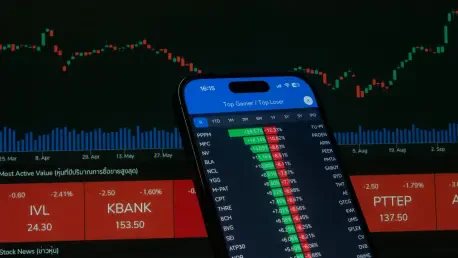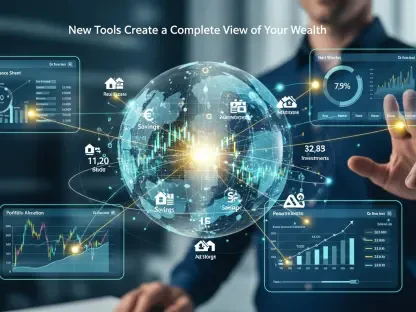In the rapidly evolving domain of financial trading, futures trading platforms have assumed a vital role, especially as they cater to the needs of both traditional traders and those exploring new avenues within financial markets. As traders seek robust tools to help them navigate the complexities of trading, these platforms have become an indispensable part of the landscape. Today, futures trading platforms not only serve as conduits for executing trades but also provide comprehensive solutions that encompass simulation and risk management features. This multi-faceted capability is shaping the future of trading strategies and investment decisions, making them indispensable in both traditional and innovative financial pursuits.
A Closer Look at Features
Real-Time Performance Tracking
A standout attribute of modern futures trading platforms is their real-time performance tracking, which is pivotal in optimizing trading outcomes. This feature enables traders to analyze their investments and positions in actual time, thereby allowing agile adjustments as market conditions shift. The ability to monitor trades instantaneously enhances strategy refinement, providing a critical edge in achieving favorable returns. Real-time analysis empowers traders to preempt market swings, transforming statistical insights into actionable strategies swiftly, which is crucial in the high-stakes arena of futures trading.
Comprehensive Risk Management
Effective risk management remains the backbone of any successful trading strategy, and futures trading platforms have made significant strides in this domain. By integrating sophisticated risk management tools, these platforms mitigate potential losses while optimizing profit margins. Traders can set position limits, use automated liquidation processes, and leverage these systems to safeguard their investments against unforeseen market volatility. These advanced tools not only instill confidence in traders but also underpin sustainable trading practices, enabling strategic decisions rooted in security and foresight.
Direct Access to Market Data
Access to up-to-the-minute market data, such as Level 1 and Level 2 data, is another critical advantage offered by futures trading platforms. This real-time data access is indispensable for informed decision-making, allowing traders to scrutinize order books and price action with precision. With enhanced visibility into market dynamics, traders are better equipped to anticipate trends and execute orders with exacting accuracy. The competitive edge provided by direct market access enhances strategic positioning in both volatile and stable market environments, allowing traders to capitalize on emerging opportunities efficiently.
Innovation and Emerging Trends
Recent innovations in futures trading technology reflect the rapid pace at which this sector is developing. Emerging trends are characterized by enhanced user interfaces, streamlined functionalities, and integration with advanced analytical tools. The rise of mobile and web applications has democratized access to sophisticated trading platforms, with features that appeal to both novice and seasoned traders. As user expectations continue to evolve, so does the sophistication of these platforms, which are increasingly focused on user-centric design and functionality enhancements. The continuous evolution in platform capabilities illustrates a commitment to meeting diverse trading needs amidst shifting technological landscapes.
Practical Applications
The practical applications of futures trading platforms span diverse industries, underlining the flexibility and applicability of these tools. Case studies reveal how firms utilize these platforms for hedging risks and maximizing profitability across various sectors. Notably, in the energy and commodities industries, futures trading plays a pivotal role in managing price fluctuations and ensuring supply chain stability. By analyzing specific case studies, one observes how customized solutions on these platforms facilitate strategic market positioning and foster viable trading environments, thereby reinforcing their integral role in global trade.
Addressing Challenges
Despite their benefits, futures trading platforms face certain challenges that could hinder wider adoption. Technical issues, such as system stability and scalability, remain a concern for developers and users alike. Furthermore, navigating ever-evolving regulatory frameworks presents a significant hurdle that can influence the platform’s operational scope. Nevertheless, ongoing efforts aimed at overcoming these challenges are evident in the form of continuous research, technological advancement, and regulatory compliance endeavors. These initiatives are crucial in ensuring that futures trading platforms remain trusted and reliable tools in the financial ecosystem.
Envisioning the Future
As the landscape of futures trading platforms has been continually reshaped by innovation and user demand, future developments are anticipated to offer even greater sophistication and interactivity. The future trajectory suggests a focus on integrating more seamless automation processes, real-time analytics, and broader access to diversified markets. The long-term impacts could see these platforms further embedding themselves into both retail and institutional trading environments. As technology progresses, futures trading platforms are poised to redefine the boundaries of what can be achieved in the financial industry, paving the path for novel economic interactions.
Ultimately, futures trading platforms have demonstrated a significant presence and potential in reshaping how trading is conducted. Their multifaceted capabilities, encompassing real-time tracking, robust risk management, and direct market access, have not only enhanced trading efficacy but also set new benchmarks for financial technology. As these platforms continue to evolve, they present exciting opportunities and set the foundation for further advancements in the financial trading sector, promising a future characterized by increased sophistication and strategic empowerment.









